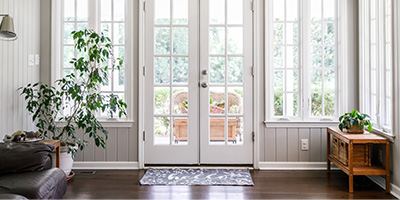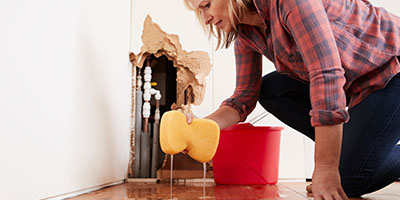The Top 9 Signs of Foundation Problems in Your Home

Project Overview
How to Check for Foundation Issues
The list of potentially expensive home repairs is long and frightening. House foundation problems top that list for most homeowners, and with good reason. The average cost to fix your foundation ranges between $5,000 and $10,000. It can climb even higher if the problems damage other parts of your home. Knowing how to check for foundation issues is a crucial part of preventive home maintenance.
Identifying cracks in walls, floors and ceilings is important when assessing potential foundation damage. But just because you can’t see a crack in the foundation doesn’t mean one isn’t there – or it isn’t coming. Paranoid yet? Time to put your mind at ease. Here are nine ways to check your home for signs of foundation issues.
9 Signs of Foundation Problems to Look Out For
1. Cracks in the Wall or Floor
The most telling signs of foundation issues are cracks in the walls and floors of your home. Not all cracks are due to serious foundation problems – small cracks near window and door frames are typically caused by normal seasonal expansion of the drywall and underlying wood. These are cosmetic hairline cracks and can be easily repaired with spackling paste.
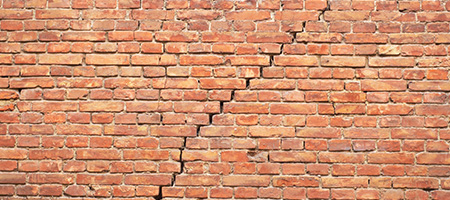
Call an Expert if You See a Crack That Is…
- More than one-eighth of an inch wide.
- Wide on one end and narrow on the other.
- Horizontal or at a 45-degree angle.
- Leaking water.
- A stair-step crack (pictured above ) on interior or exterior walls.
What Is a Stair-Step Crack?
Large, deep splits through mortar and brick are key indicators of a stair-step crack. You should call a contractor if the split is deeper than a quarter of an inch. Left unchecked, stair-step cracks can lead to bowing walls and sagging ceilings.
2. Sagging Walls or Ceilings
Warped floors and ceilings can be signs of foundation damage. Foundation shifting compacts walls and support beams. These shifts can cause the weight of the house to sit unevenly in certain spots, resulting in sagging floors and ceilings. A telltale sign of foundation problems is a slanted floor, so use a level to monitor your home’s slope from time to time. If you notice your house shifting in one direction, it may be time to call a professional.
3. Stubborn Doors and Windows
Sometimes, a stubborn window simply calls for a little degreaser. But if you notice your windows and doors getting tougher to close, it could be a sign of foundation issues. As an unstable foundation shifts, it can distort the shape of the frames. This makes your doors and windows unable to latch and eventually jam entirely.

4. Musty Smells in the Basement
That familiar, musty smell in basement corners and crawlspaces can spell trouble for your foundation. The odor itself is usually mildew and could stem from leaking basement walls. The problem could be plumbing related, but moisture seeping in through cracks in your foundation can cause musty odors as well.
Blocked gutters are often a major culprit in basement-related foundation problems. Give your gutters a once-over to make sure they’re properly protecting your home. If your gutters are clear but you’re still having problems with a damp basement, sometimes all it takes is a little redirection.

"Installing downspout extensions will help to move water away from the home’s foundation. These should be at least 10 feet away from the home. Additionally, check your sump pump regularly. Clean any debris found in or around it and test the battery backup monthly to avoid water in your basement."
Jenna Wertz, Acculevel Inc.
New homeowner? Follow our comprehensive guide for DIY home improvement tips!
5. Mold Build-Up
As with mildew in the basement, recurring mold in the corners of windows and walls means moisture is accumulating in your home. Before breaking out the dehumidifier, check mold-prone areas to rule out any foundation-related cracks and gaps that could be letting water in.
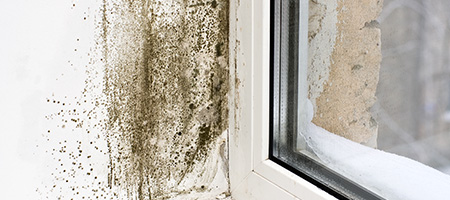
6. Gaps Between Exterior Windows and Walls
If you start to notice gaps between your façade and your front door and windows, it could mean that a shifting foundation is pulling them apart. These gaps can allow water and insects into the walls of your home, causing even more foundation damage in the long run.
7. Bowed Walls
If you notice interior or exterior walls beginning to bow, it could be a sign that your home’s foundation is on the move. However, don’t mistake a paint blister for bowing. These can indicate heat or water damage to your paint and drywall, and while they may require urgent attention, they are usually not related to foundation problems.
8. A Slanted Chimney
Chimney movement is another telltale sign of foundation issues. If your chimney shifts too much, it can collapse entirely, posing a serious threat to your family and your property. If you notice your chimney looking a little off-kilter, call a professional immediately to get it repaired and stabilized.
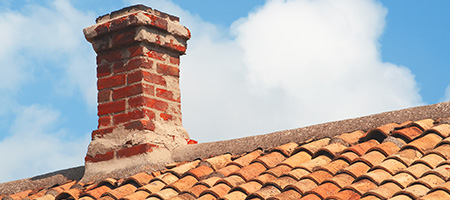
9. Nails Popping Out of Drywall
Nail pops are small, round cracks in your walls where nails have begun to pull away from the sheetrock. They’re usually an easy fix, but if they occur frequently, it’s probably a sign of wall movement and larger foundation problems.


